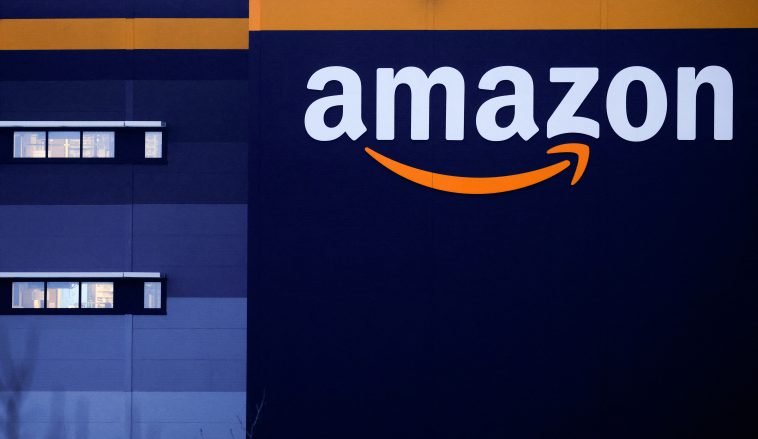Introduction.
If you’re selling on Amazon using Fulfillment by Amazon (FBA), one of the key elements to running a successful store is keeping your products in stock.
No matter how amazing your product is, it won’t make you a penny if it sits out of stock for weeks! Knowing exactly how to restock Amazon FBA can mean the difference between building steady sales or watching your store fall behind in rankings.
In this guide, I’ll take you through the process of restocking your Amazon FBA inventory, covering the different strategies, tips, and techniques that will help keep your inventory balanced and your customers happy.
But before diving into the details, let’s talk about why restocking is so essential and what can happen if it’s not done properly.
Why Restocking Your Amazon FBA Inventory Matters
When your FBA products are out of stock, you risk losing customers to competitors and dropping in Amazon’s search rankings. Here’s why this matters:
1. Maintaining Sales Momentum.
When a product goes out of stock, the sales momentum you’ve built can come to a halt. With Amazon’s algorithm favouring products with consistent sales, running out of stock can affect your listing’s visibility.
2. Preventing Customer Loss.
Amazon shoppers are often looking for immediate delivery, and if your product isn’t available, they’re likely to buy from a competitor rather than wait. Keeping stock levels optimized ensures you’re always ready to meet customer demand.
3. Avoiding Stock-Out Fees and Penalties.
While Amazon doesn’t charge a direct penalty for going out of stock, the costs come indirectly. Drops in rankings lost sales, and even potential increases in advertising costs can make restocking poorly a costly mistake.
How Do I Restock Amazon FBA?
Here’s a step-by-step look at the process:
1. Analyze Your Sales Data
Before making any restocking decision, check your sales data. Look at both past sales and seasonal trends.
Tools like Amazon Seller Central’s reporting features or third-party inventory management tools (like RestockPro or SoStocked) can help you forecast your needs accurately.
2. Calculate the Lead Time and Reorder Point.
Lead time is the time it takes for your supplier to manufacture, ship, and have products available for sale on Amazon. Knowing this helps you calculate a reorder point, the stock level at which you should place your next order.
3. Set Safety Stock Levels.
Safety stock acts as a buffer in case of unexpected demand spikes or supplier delays. You can calculate it based on your typical demand and lead times, ensuring you always have a cushion.
4. Choose a Restocking Frequency.
Depending on your sales volume, you may restock weekly, bi-weekly, or monthly. Some sellers even find a bi-annual or seasonal restock cycle works best. Finding a rhythm that aligns with your business model and cash flow is key.
5. Use Amazon’s Restock Inventory Tool.
Amazon’s Restock Inventory tool in Seller Central can be invaluable. It suggests reorder quantities and dates based on your sales history, helping you avoid running out or overstocking.
Keep in mind that these recommendations are estimates, so always cross-check them with your own data.
6. Monitor Inventory Performance Regularly.
Inventory management is a dynamic process. Use Amazon’s Inventory Performance Index (IPI) to track your stock levels and get insights on what’s moving well or what might need adjustments.
Pros and Cons of Restocking Amazon FBA
Let’s break down some advantages and disadvantages:
Pros:
- Improves Seller Ranking: Consistent sales help maintain a better ranking on Amazon, increasing visibility.
- Higher Customer Satisfaction: Staying stocked ensures customers get fast shipping, leading to better reviews and higher retention.
- Lower Ad Spend: If you’re in stock consistently, you’ll spend less on advertising to regain rankings.
Cons:
- Upfront Costs: Regular restocking can require significant capital, especially if suppliers have high minimum order quantities.
- Risk of Overstocking: Overstocking can lead to increased Amazon storage fees, especially if sales slow unexpectedly.
- Inventory Management Complexity: Restocking on time requires effective management, which can be challenging for new sellers without dedicated tools.
Common Mistakes to Avoid When Restocking
- Overstocking: While it might seem better to have extra, overstocking can result in costly storage fees.
- Underestimating Lead Times: If you don’t factor in shipping, customs delays, or peak season slowdowns, your stock might run out sooner than expected.
- Ignoring Seasonality: Products often experience higher demand at certain times of the year (think summer for sunscreen, winter for holiday decorations). Adjust restock amounts accordingly.
- Not Using Amazon’s Forecasting Tools: Amazon provides data that can help you make informed restocking decisions. Ignoring these can lead to errors in planning.
FAQs
1. How do I calculate how much stock I need to reorder?
Use a formula based on your daily sales velocity, lead time, and safety stock levels. Many inventory management tools can help automate this process, making it easier to reorder at the right time.
2. What happens if my product goes out of stock?
If your product runs out, it can lose ranking, impacting its visibility. Additionally, customers may choose competitor products, affecting your store’s overall sales.
3. Can I use third-party warehouses to manage my inventory?
Yes, many sellers use third-party logistics (3PL) providers to store overflow inventory. This strategy helps reduce Amazon’s long-term storage fees and gives you more control over restocking.
4. What’s the best time to restock?
Restock timing depends on your sales velocity and lead time. Generally, it’s best to have stock arrive 2-3 weeks before you’re expected to run out.
5. Are there tools to help manage restocking?
Yes! Some popular tools include RestockPro, SoStocked, and InventoryLab. These tools help you track inventory, forecast needs, and even handle purchase orders.
6. How can I reduce restocking costs?
Consider buying larger quantities if possible to lower per-unit costs, or negotiate better terms with suppliers. You can also use Amazon’s small and light program to reduce storage fees for eligible items.
Conclusion
Restocking Amazon FBA inventory is an ongoing process that requires careful planning, monitoring, and sometimes a bit of trial and error.
As your store grows, staying on top of your restocking strategy becomes crucial to maintaining a steady cash flow, improving rankings, and building customer loyalty.
What restocking challenges have you faced in your Amazon FBA journey?





GIPHY App Key not set. Please check settings